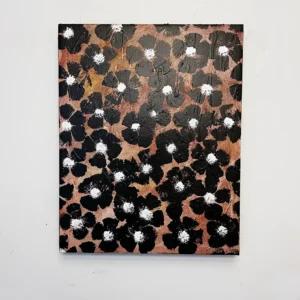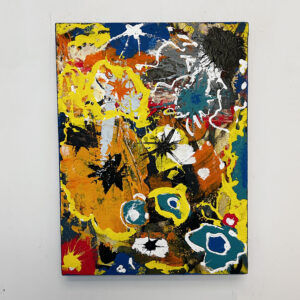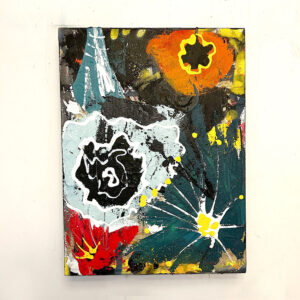Pittsburgh boasts a vibrant and thriving art scene that has captivated locals and visitors alike. Steeped in history and cultural significance, the city has become a hub for artistic expression, showcasing both its rich heritage and contemporary creativity. In this article, we delve into the various facets of Pittsburgh’s art scene, exploring its historical roots, contemporary landscape, public art, festivals, and events, as well as its future trajectory.
The Historical Roots of Pittsburgh’s Art Scene
The art scene in Pittsburgh has deep roots that trace back to the city’s industrialization era. The impact of industrialization on artistic expression was profound, shaping the art produced during that time. As factories and steel mills emerged, artists found inspiration in both the beauty and challenges of the industrial landscape.
Pittsburgh’s art history is replete with notable artists and art movements. From the Ashcan School painters capturing the grit and reality of industrial life to the regionalist movement embracing the city’s unique identity, Pittsburgh has fostered talented individuals who have left an indelible mark on the art world.
One prominent artist who emerged during this period was Mary Cassatt. Born in Pittsburgh in 1844, Cassatt became known for her Impressionist paintings that depicted scenes of everyday life. Her work often featured women and children, capturing intimate moments with a delicate touch. Cassatt’s art not only reflected the changing social dynamics of the time but also challenged traditional notions of gender roles.
Another influential figure in Pittsburgh’s art scene was Andy Warhol. Born in 1928, Warhol grew up in the city and later became one of the leading figures of the Pop Art movement. His iconic works, such as the Campbell’s Soup Cans and Marilyn Monroe portraits, revolutionized the art world by blurring the boundaries between high and popular culture. Warhol’s unique approach to art continues to inspire and influence artists today.
In addition to individual artists, Pittsburgh also saw the rise of art collectives and organizations that played a vital role in nurturing the local art scene. One such group was the Associated Artists of Pittsburgh, founded in 1910. This organization provided a platform for local artists to exhibit their work and connect with other like-minded individuals. Through exhibitions and events, the Associated Artists of Pittsburgh helped to create a sense of community among artists and fostered a supportive environment for artistic growth.
Furthermore, Pittsburgh’s art scene has been shaped by the city’s rich cultural heritage. The influx of immigrants during the industrial era brought diverse traditions and artistic practices to the region. From the vibrant folk art of Eastern European communities to the intricate craftsmanship of African American artisans, Pittsburgh became a melting pot of artistic expression. These cultural influences continue to be celebrated and incorporated into the city’s art scene, adding depth and diversity to the creative landscape.
Today, Pittsburgh’s art scene continues to thrive and evolve. The city is home to numerous galleries, museums, and art institutions that showcase a wide range of artistic styles and mediums. From contemporary installations to classical masterpieces, there is something for every art enthusiast to explore and appreciate. The legacy of Pittsburgh’s industrial past can still be felt in the art produced today, as artists draw inspiration from the city’s history while pushing the boundaries of creativity.
The Contemporary Art Landscape in Pittsburgh
The art scene in Pittsburgh today is a fusion of tradition and innovation, with galleries and museums playing a pivotal role in showcasing contemporary works. These spaces serve as platforms for emerging artists to exhibit their creations, inviting dialogue and engagement with the wider community.
Emerging artists in Pittsburgh are pushing the boundaries of artistic expression, exploring new mediums, and challenging conventional norms. The city’s dynamic art landscape is a testament to the boundless creativity and forward-thinking mentality of its artistic community.
One of the most prominent galleries in Pittsburgh is the Carnegie Museum of Art, which has been a cornerstone of the city’s art scene since its establishment in 1895. With its vast collection of contemporary artworks, the museum provides a comprehensive overview of the evolving artistic landscape in Pittsburgh. From vibrant paintings to thought-provoking sculptures, visitors can immerse themselves in a diverse range of artistic expressions.
Another notable institution is the Mattress Factory, a contemporary art museum that specializes in site-specific installations. Located in the historic Mexican War Streets neighborhood, the museum offers a unique experience for art enthusiasts. Each room within the museum is transformed into an immersive art installation, blurring the boundaries between art and everyday life.
One of the defining characteristics of Pittsburgh’s art scene is its emphasis on community engagement. Many galleries and art spaces actively collaborate with local organizations and initiatives to foster a sense of inclusivity and accessibility. This collaborative spirit is exemplified by the Pittsburgh Cultural Trust, a non-profit organization that promotes the arts and cultural diversity in the city. Through its various programs and events, the trust aims to make art accessible to all, regardless of background or socioeconomic status.
As Pittsburgh continues to evolve, so does its art scene. The city’s rich industrial history has provided a unique backdrop for artists to explore themes of transformation and reinvention. From repurposing abandoned factories into art studios to incorporating elements of steel and metalwork into sculptures, Pittsburgh’s artists draw inspiration from their surroundings, infusing their works with a sense of place and identity.
Moreover, the city’s vibrant street art scene adds another layer of creativity to Pittsburgh’s artistic landscape. Colorful murals and graffiti can be found throughout various neighborhoods, transforming once neglected walls into vibrant canvases. These public art installations not only beautify the city but also serve as a means of self-expression and cultural commentary.
In conclusion, the contemporary art landscape in Pittsburgh is a dynamic and ever-evolving ecosystem. With its fusion of tradition and innovation, emphasis on community engagement, and unique artistic expressions, the city continues to attract and nurture emerging artists. From world-class museums to grassroots initiatives, Pittsburgh offers a diverse range of platforms for artists to showcase their creations and engage with the wider community.
Public Art and Street Art in Pittsburgh
One cannot explore Pittsburgh’s art scene without acknowledging the captivating public art and street art that adorn the city’s walls and public spaces. Iconic murals tell stories of the city’s history, capturing the essence of its neighborhoods and serving as a visual tapestry that celebrates diversity and community.
Street art has had a profound impact on Pittsburgh’s urban aesthetics, injecting vibrancy and creativity into its streets. From colorful graffiti murals to elaborate installations, street art has become an integral part of the city’s cultural fabric, inviting viewers to engage with their surroundings in unexpected ways.
Walking through the streets of Pittsburgh, one can’t help but be drawn to the mesmerizing murals that line the walls. These larger-than-life artworks depict everything from historical figures and events to abstract designs that challenge the viewer’s perception. Each mural tells a unique story, reflecting the neighborhood it resides in and the people who call it home.
One of the most iconic murals in Pittsburgh can be found in the neighborhood of Lawrenceville. Painted on the side of a building, this vibrant artwork showcases the neighborhood’s rich history and its transformation over the years. The mural depicts scenes of bustling streets, local landmarks, and the diverse community that thrives within its boundaries. It serves as a reminder of the neighborhood’s past while embracing its present and future.
Another notable mural can be found in the Strip District, a vibrant area known for its bustling markets and eclectic shops. This particular mural celebrates the district’s role as a hub of cultural exchange and commerce. The artwork features a kaleidoscope of colors and patterns, representing the diverse range of goods and cultures that converge in this lively neighborhood.
While murals are a prominent form of public art in Pittsburgh, street art takes on many other forms as well. Elaborate installations can be found in unexpected places, transforming ordinary spaces into immersive experiences. From sculptures made out of recycled materials to interactive light displays, these installations challenge traditional notions of art and encourage viewers to actively engage with their surroundings.
One such installation can be found in the heart of downtown Pittsburgh. A series of colorful, oversized chairs are scattered throughout a public square, inviting passersby to take a seat and interact with the artwork. The chairs, each uniquely designed and painted, represent the diversity of the city’s residents and serve as a symbol of unity and inclusivity.
In addition to murals and installations, Pittsburgh’s street art scene also includes vibrant graffiti art. What was once considered an act of rebellion has now evolved into a respected art form that adds character and personality to the city’s walls. From intricate lettering to bold, abstract designs, graffiti artists leave their mark on the urban landscape, transforming ordinary spaces into visually captivating works of art.
One of the most renowned graffiti artists in Pittsburgh is known for his distinctive style and intricate designs. His murals can be found throughout the city, each one showcasing his incredible talent and unique perspective. His work often incorporates elements of nature and the human form, creating a harmonious blend of organic and geometric shapes.
Public art and street art in Pittsburgh continue to evolve and inspire. They serve as a testament to the city’s vibrant arts community and its commitment to fostering creativity and expression. Whether it’s a thought-provoking mural, an immersive installation, or a captivating graffiti piece, each artwork contributes to the visual tapestry that makes Pittsburgh a truly unique and dynamic city.
Art Festivals and Events in Pittsburgh
Throughout the year, Pittsburgh hosts a plethora of art festivals and events that showcase the city’s vibrant cultural tapestry. These annual gatherings not only provide a platform for artists to showcase their work but also create opportunities for the community to come together and engage with the arts.
Art festivals play a significant role in community engagement, fostering a sense of unity and celebration of artistic expression. They serve as catalysts for conversations, sparking dialogue about contemporary issues and providing a medium through which artists can address social and cultural matters.
The Future of Pittsburgh’s Art Scene
Looking ahead, the future of Pittsburgh’s art scene appears promising. The role of art education and youth programs is key in nurturing the next generation of artists, ensuring that the vibrant creative energy of the city continues to flourish and evolve.
Predictions for upcoming artistic movements and trends reflect a desire for further exploration of new mediums, interdisciplinary collaborations, and an increased emphasis on community engagement. As Pittsburgh continues to grow and evolve, its art scene will undoubtedly follow suit, further cementing its status as a hub of artistic excellence.
Exploring the vibrant art scene in Pittsburgh is an enchanting journey through history, innovation, and community. From its rich artistic heritage to the dynamic contemporary landscape, the city offers a tapestry of artistic expression that captivates and inspires. As Pittsburgh looks to the future, it holds the promise of further artistic innovation, ensuring that its art scene remains vibrant, inclusive, and an integral part of the city’s identity.


